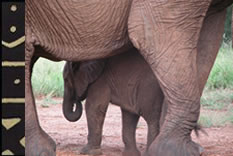Wild dogs
The African Wild Dog (Lycaon pictus) is a vanishing species. Mysterious, elusive, and enigmatic, they are the restless corsairs of the African plains. They possess no territories. Only when the alpha female whelps does the pack settle down for a few months, until the pups are old enough to accompany it on its marathon journeys.
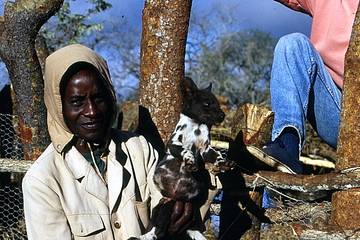
African Wild Dogs are the wolves of Africa. Their heads are broad, their muzzles short. There is strength in the muscular neck, stamina in the deep chest, tenacity in their long, slim legs. They seldom raise their hunting pace above 30 miles per hour, but can maintain a steady speed for miles, wearing down their prey in a remorseless and single-minded chase to the death.
For years, they were despised as vermin, shot and poisoned by farmers, hunters, pastoralists and game departments. Condemned as stock raiders, they became fugitives, a vanishing breed once memorably described by the late conservationist-photographer Hugo van Lawick as "innocent killers". All over Africa, their history has been one of unremitting persecution. Only when more enlightened attitudes began to prevail did they appear for the first time in their own true light: not as indiscriminate butchers, but as highly intelligent social animals whose hunting efficiency actually improves the quality of the game by removing sick individuals and scattering herds to prevent inbreeding.
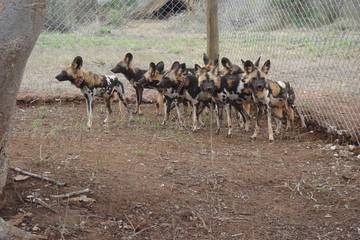
Sadly, the change in attitude has come too late to save many packs. Despite the protection of the parks and reserves, they have continued to decline throughout their range. Disease and poisoning are some of the prime causes of their downfall. Canine distemper and rabies, picked up from domestic dogs, can wipe out an entire pack: once one animal is infected, the sociability of the Wild Dog ensures that the disease spreads rapidly throughout the pack.
Today, in the whole of Africa, fewer than 6,600 of these remarkable animals survive across a handful of countries. Unless Africa's Wild Dogs are given the help needed for their recovery, the future of these fascinating animals will remain uncertain. We must act now to ensure their survival.
1995-2019
In 1995, the trusts launched East Africa's first captive breeding and translocation programme for the critically endangered African Wild Dog. This project started with the arrival of 25 pups from three different families on the Maasai Steppe, an area where the local Maasai pastoralists poison the dogs in retaliation for killing livestock.
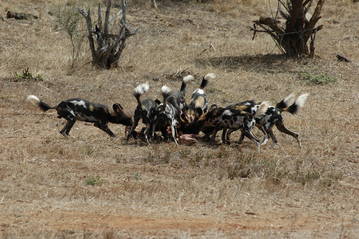
A veterinary programme was underway following the dogs' arrival. All of the dogs were inoculated against rabies, canine distemper, leptosprirosis and parvo-virus. Blood sampling took place, and the effectiveness of the vaccination programme was studied. A massive setback occurred when many of the dogs died of canine distemper, despite vaccination with a killed vaccine. The Erasmus University in Rotterdam made it their plight to investigate the canine distemper problem in wild dogs. DNA print outs were carried out, indicating a promising bio-diversity between the dogs for genetic viability. Microchips were inserted beneath their skin so that the individuals from the different groups could be identified. The vaccination programme continued to be run for the length of the programme, following the protocols established many years before. When we started the programme, it was said that rabies vaccinations did not work in the species. With thanks to research by the late Dr Aart Visee and the Erasmus University, Rotterdam, it is now known that the African wild dog has to be vaccinated three times to achieve immunity.
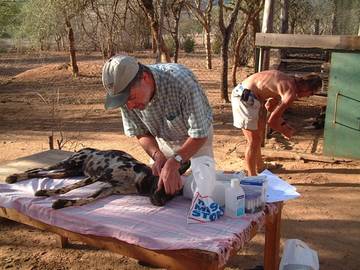
The research programme took 10 years and a trial was also undertaken with Artis Zoo, Amsterdam on a vaccine for canine distemper. From 2000 onwards there was no outbreak of disease in the breeding programme.
This endangered species programme in Mkomazi was run as a practical management programme to try to address the decline. This involved breeding the wild dogs in seven breeding compounds at the base camp, veterinary research, vaccination schedules and various reintroductions back into the wild in the Mkomazi/Tsavo ecosystem. The welfare of the dogs and their preparation for a free-living existence was the priority.

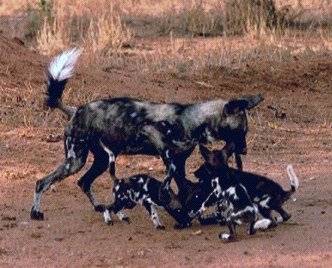
Some breeding alpha pairs remained at the base-camp in their compounds. Offspring, having helped their mother raise the subsequent litter, were separated and reintroduced back to the wild. The dogs were released either as sibling packs or full family packs.
Throughout the programme, we continued to breed and reintroduce the African wild dogs back to the wild, with the aim of re-establishing viable populations of healthy and genetically diverse stock into areas where they would have the best chance of success. The Mkomazi/Tsavo ecosystem is one such area. TANAPA’s management of the park has resulted in a virtually stock-free park in which the dogs can have a good chance of survival, linked to the Tsavo ecosystem in Kenya.

